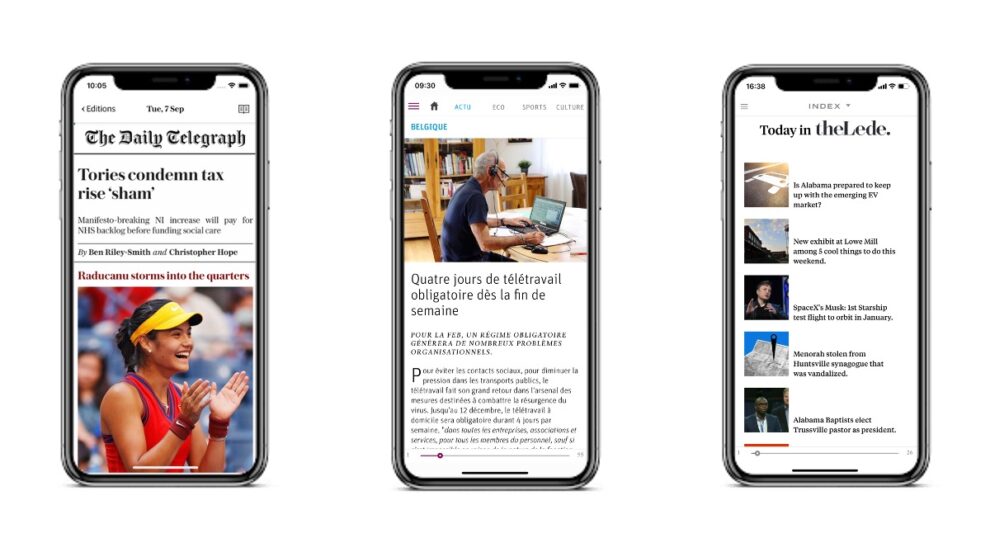Print is the original heartbeat of news. For centuries we have seen news distributed in physical format. In the Egyptian era we had papyrus, we saw the invention of the printing press around 1440 and then the release of the first ever newspaper in 1656.
But as the world has continued to develop, publishers have begun transitioning over to digital and the role of print has become a topic of much debate.
Print remains a key revenue and readership driver
Revenue generation is a survival issue for publishers and here, print remains a dominant force. WAN–IFRA‘s World Press Trends Report 2022 found that print circulation still represented $54.6 billion over the last 12 months, 25.7% of publisher’s overall revenue. A large figure, this was also a 1.1% YoY growth figure from 2021’s World Press Trends Report.

A chunk of this growth can significantly be attributed to more relaxed measures around the pandemic. Publishers were able to return to normal distribution means and people could visit shops to buy newspapers. Either way, this growth still represents a mini bounce back for publishers. Print’s revenue figure is significantly more than the $7.5 billion made by digital circulation revenue. Despite the focus on digital, digital subscriptions still only make up 9% of overall revenue.
Print’s revenue domination also reflects the story around readership. Of the 572.8 million paying news readers, print circulation made up 532.8 million, over 10 times the 52.5 million digital readers. People are clearly still willing to pay for news in print format, and that is a positive piece of information for publishers despite the gap between print and digital.
At Twipe, we prefer to look at this gap as the enormous potential of readers to convert to digital. People have recently worried about publishers reaching peak subscription, but clearly there is a long way to go with subscriber conversion from print to digital. To counteract the worries about peak subscription and subscription fatigue, publishers can explore new premium products like digital editions. These can go beyond the “plus” or newsflow subscription models of publishers. People are willing to pay for news.
But publishers plan to divest in their print production
Despite this revenue generation, print remains an expensive luxury for publishers. Print production made up 14.5% of publisher’s costs for 2021-2022. Compare this to the 4.8% publishers spent on product and the price disparity between print and digital is laid clear.

A key reason for this is the material nature of print news products. Beyond the actual journalism, daily print products cost more to develop. In the UK, this May Reach PLC announced that it was having to make cuts to print production to address “the rising price of materials and other inflationary pressures”. This move is in line with Reach’s wider regional and national strategy, as they seek to “reduce costs around print publication where we can.” The UK group has seen a growth in their digital audiences, and instead want to see their digital revenue growth accelerated.
Dr Merja Myllylahti from Auckland University of Technology told INMA how Norske Skog, the main provider of paper to the local publishing industry in Australia, has proposed a price increase of 30%-40% to keep print production alive at their Tasmanian paper mill. This is following the closure of its New Zealand mill in 2021.
It is no wonder that 67% of publishers plan to divest in print production over the next 12 months. Print is not sustainable enough for publishers anymore and digital business models are the future. Digital editions can act as a bridging and conversion tool. They offer the closest experience to print and can replicate the habit-forming nature of print editions.

Some innovative publishers have already taken the lead. Examples are well known across the industry, like Arkansas Democrat Gazette sending their subscribers iPads, Daily Mail offering free Amazon tablets to their Black Friday subscribers and Scandinavian publishing giant Bonnier telling Teona Sekhniashvili of The Fix, that they were now working “as if print did not exist.”
Environmental concerns in a sustainability focused world
The world is facing a climate emergency. This concern has been reflected by legislative bodies and movements worldwide. Newspapers now also recognise the impact of their carbon footprint.
Print is an obvious area where publishers can make a change. Whilst it serves a special place in newsreader’s hearts, it is an environmental luxury. At a time of a global energy crisis, print and pulp remains the fourth most energy intensive industry in Europe. Print’s waste has been an issue facing publishing for years. For every copy of a print edition sold, 2.2 copies have to be manufactured to cover waste generation at printers and unsold copies at newsstands. The resources to manufacture a single print edition also contribute and include 30 litres of water and 270 grams of wood amongst others.
For these reasons, publishers have begun to make moves. The Guardian have committed to be net carbon neutral by 2030. They do this despite remaining committed to a future with print, their number one contributor to emissions.

Other frontrunners have started to measure their digital emissions. Axel Springer have researched into sustainable data storage and hope to record as precisely as possible the amount of electrical energy used directly or indirectly in external data centres to derive the CO2 climate-impacting footprint of their actions. Norway’s Schibsted focuses on the type and volume of energy needed to power reader devices measured through average reading time for their sustainability reporting.
The positive news is that the impact of reading news online looks to be less. Research from Radio Television Switzerland found that reading a digital newspaper creates less emissions than locally produced and distributed news… without even considering unsold copies.

There remains a long way to go to reach carbon neutrality but moves in digital look promising. Publishing and the relationship with print is bound to be a topic for years to come, and we will be monitoring developments closely.
